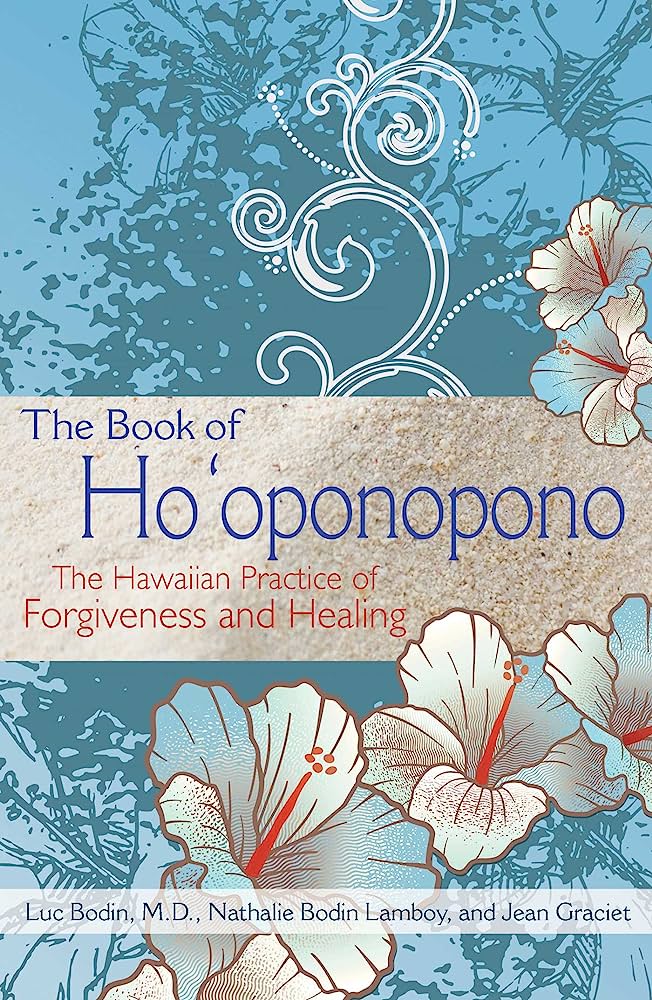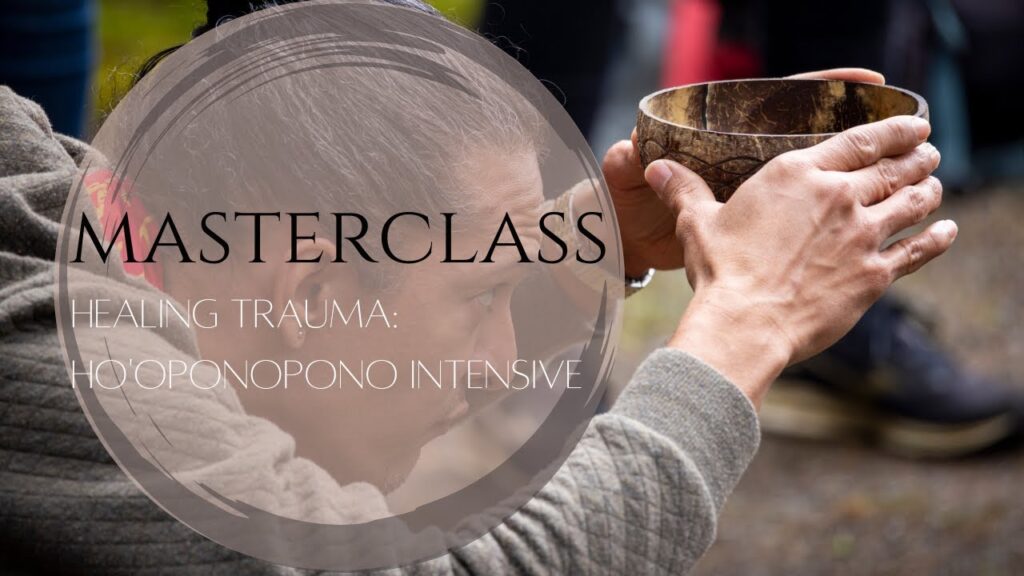Have you ever heard of Ho’oponopono? It might sound like a mouthful, but it’s actually a powerful practice that can provide remarkable benefits, especially when it comes to recovering from Post-Traumatic Stress Disorder (PTSD). If you find it difficult to heal from past traumatic experiences or struggle with the symptoms of PTSD, then this ancient Hawaiian tradition might just be what you need. In this article, we’ll delve into the details of how practicing Ho’oponopono can aid in your journey of recovering from PTSD, giving you a fresh perspective and newfound hope.
Ho’oponopono is a traditional Hawaiian practice that focuses on reconciliation, forgiveness, and healing. It involves four key phrases: “I’m sorry, please forgive me, thank you, I love you.” These seemingly simple words hold immense power in resolving inner conflicts and releasing emotional wounds. When practiced regularly, Ho’oponopono can help individuals let go of the past, release emotional baggage, and cultivate a sense of peace and healing within themselves. In the context of PTSD, this practice can be particularly beneficial as it addresses the root cause of the disorder by acknowledging past traumas and actively working towards forgiveness and resolution. So, stay tuned to discover how Ho’oponopono can bring you closer to recovery from PTSD, offering you a sense of solace and renewal. Post-Traumatic Stress Disorder (PTSD) is a debilitating condition that affects individuals who have experienced traumatic events. It can cause intense anxiety, intrusive thoughts, and flashbacks, making it difficult for those affected to live a normal and fulfilling life. While there are traditional methods of treating PTSD, such as therapy and medication, exploring alternative approaches can provide additional support and healing. One such approach is Ho’oponopono, a traditional Hawaiian practice that focuses on forgiveness, healing, and restoring balance. In this article, we will explore the connection between Ho’oponopono and PTSD recovery, how to get started with the practice, and its potential benefits.

Understanding Post-Traumatic Stress Disorder (PTSD)
Before delving into how Ho’oponopono can aid in PTSD recovery, it is essential to have a clear understanding of PTSD itself. PTSD is a mental health disorder that can develop after experiencing or witnessing a traumatic event. These events can include but are not limited to, physical or sexual assault, natural disasters, war, or accidents. The symptoms of PTSD can vary but often include nightmares, flashbacks, severe anxiety, and a heightened sense of vigilance or emotional distress.
PTSD can have a profound impact on an individual’s overall well-being. It can disrupt relationships, cause difficulties in daily functioning, and lead to feelings of isolation and hopelessness. Traditional methods of treating PTSD, such as therapy and medication, can be effective for many individuals. However, exploring alternative approaches like Ho’oponopono can provide additional support and healing.
The Connection Between Ho’oponopono and PTSD Recovery
Ho’oponopono, which means “to make right,” is a traditional Hawaiian practice of forgiveness, reconciliation, and healing. It focuses on releasing negative emotions, letting go of resentment, and restoring harmony and balance within oneself. While not specifically designed for PTSD recovery, the principles and techniques of Ho’oponopono can address the root causes of PTSD and support the healing process.
How Ho’oponopono Addresses the Root Causes of PTSD
Ho’oponopono can benefit individuals with PTSD by addressing the root causes of their trauma. Through the practice of Ho’oponopono, one takes responsibility for their own thoughts, feelings, and actions that contribute to their suffering. By acknowledging these internal processes and taking steps to heal them, individuals can begin to release the grip that past traumas have on their present lives.
Ho’oponopono encourages individuals to let go of negative emotions, such as anger, guilt, and resentment, that may be associated with their traumatic experiences. By clearing these emotions, individuals create space for healing and transformation. The practice emphasizes the importance of forgiveness, not only towards others but also towards oneself. This forgiveness can be a powerful tool in releasing the emotional burden of trauma and moving towards a state of inner peace and well-being.
Benefits of Practicing Ho’oponopono for PTSD Recovery
The practice of Ho’oponopono can have several benefits for individuals experiencing PTSD. Here are some of the ways in which Ho’oponopono can aid in the recovery process:
-
Emotional Release: Ho’oponopono provides a safe space for individuals to express and release their emotional pain. The practice encourages individuals to acknowledge and honor their emotions, allowing them to heal and move forward.
-
Letting Go of the Past: Ho’oponopono helps individuals let go of the past and cultivate a sense of presence and mindfulness. By focusing on the present moment and letting go of attachments to past traumas, individuals can experience greater peace and freedom.
-
Restoring Inner Balance: Ho’oponopono aims to restore harmony and balance within oneself. By practicing forgiveness and healing, individuals can find inner peace and a renewed sense of well-being.
-
Enhancing Self-Compassion: Ho’oponopono promotes self-compassion, teaching individuals to be kind and gentle with themselves through the healing process. By practicing self-forgiveness and self-love, individuals can cultivate a deeper sense of self-acceptance and self-worth.

Getting Started with Ho’oponopono
If you are interested in exploring Ho’oponopono as a complementary approach to support your PTSD recovery, here are some steps to get started:
Finding a Qualified Ho’oponopono Practitioner
It can be beneficial to work with a qualified Ho’oponopono practitioner who can guide you through the practice and provide support. Look for practitioners who have received proper training and have a deep understanding of the cultural origins and spiritual aspects of Ho’oponopono. Seek recommendations from trusted sources or do thorough research to find a practitioner who resonates with you and your specific needs.
Learning Ho’oponopono Techniques and Mantras
To begin practicing Ho’oponopono on your own, it is essential to learn some of the techniques and mantras associated with the practice. These techniques typically involve repeating specific phrases, such as “I’m sorry, please forgive me, thank you, I love you.” These phrases are used as a means of taking responsibility for one’s experiences, seeking forgiveness, expressing gratitude, and cultivating love and compassion. Learning from a qualified practitioner or through reputable resources can help you understand and implement these techniques effectively.
Step-by-Step Guide to Practicing Ho’oponopono for PTSD Recovery
Now that you have a basic understanding of Ho’oponopono and how it can aid in PTSD recovery, let’s explore a step-by-step guide to practicing Ho’oponopono for optimal results:
Creating a Quiet and Serene Environment
Find a quiet and serene environment where you can engage in Ho’oponopono practice without distractions. This can be a peaceful corner of your home, a park, or any space that allows you to connect with yourself and your intentions.
Clearing Negative Energy and Emotions through Ho’oponopono
Start your Ho’oponopono practice by acknowledging and releasing negative energy and emotions related to your trauma. Close your eyes, take deep breaths, and focus on your feelings and thoughts. Use the Ho’oponopono techniques and mantras to express your intention to clear these negative energies and emotions from your being.
Forgiving Oneself and Others with Ho’oponopono
Next, focus on forgiveness. Recognize the part you played in your trauma and offer forgiveness to yourself for any guilt or shame you may be carrying. Similarly, extend forgiveness to others who may have contributed to your trauma. Use the Ho’oponopono techniques and mantras to express your forgiveness and intention to let go of resentment and anger.
Expressing Gratitude and Love towards Self and Others
Finish your Ho’oponopono practice by expressing gratitude and love towards yourself and others. Reflect on the things you are grateful for in your life, despite the challenges you have faced. Use the Ho’oponopono techniques and mantras to express gratitude and love, allowing these feelings to fill your heart.

Research and Studies on Ho’oponopono’s Effectiveness in PTSD Recovery
While scientific research on Ho’oponopono specifically for PTSD recovery may be limited, there is evidence to support its effectiveness in promoting emotional well-being and reducing stress. Several studies have explored the benefits of forgiveness and self-compassion, which are integral components of Ho’oponopono, in trauma recovery. These studies suggest that practices like Ho’oponopono can contribute to healing and overall psychological well-being in individuals who have experienced trauma.
Scientific Research Findings on Ho’oponopono and PTSD
While there may not be specific scientific studies on Ho’oponopono for PTSD recovery, research on forgiveness, mindfulness, and self-compassion can provide insights into its potential effectiveness. For example, studies have shown that forgiveness can lead to reduced levels of anxiety, depression, and anger in individuals who have experienced trauma. Mindfulness practices, such as Ho’oponopono, have also been found to reduce symptoms of PTSD and improve overall mental well-being.
Case Studies of Individuals Who Have Used Ho’oponopono for PTSD
Although research may be limited, there are numerous anecdotal accounts of individuals who have found relief and healing from PTSD through the practice of Ho’oponopono. These personal stories highlight the potential benefits of incorporating Ho’oponopono into a holistic approach to PTSD recovery. However, it is important to remember that individual experiences may vary, and what works for one person may not work for another.
Testimonials and Personal Stories of PTSD Recovery through Ho’oponopono
To gain further insight into the potential of Ho’oponopono for PTSD recovery, let’s hear from individuals who have personally experienced its transformative effects:
Interviews with Individuals Who Have Overcome PTSD with Ho’oponopono
-
Sarah, a survivor of physical assault, found solace in Ho’oponopono. She shares, “Ho’oponopono allowed me to let go of the anger and resentment I held towards my attacker. It gave me a sense of forgiveness and freedom I didn’t think was possible. Through the practice, I was able to reclaim my power and move forward with my life.”
-
John, a war veteran, found relief from his PTSD symptoms through Ho’oponopono. He says, “Ho’oponopono helped me heal the wounds that war left on my soul. By practicing forgiveness and self-compassion, I learned to let go of the pain and find peace within myself. It has been an essential tool in my journey towards recovery.”
These testimonials illustrate the potential impact of Ho’oponopono in supporting individuals in their PTSD recovery journey. It is important to remember that Ho’oponopono is just one approach, and it may not be a standalone solution for everyone. Combining it with other therapies and seeking professional help when needed is crucial for comprehensive support.

Potential Limitations and Precautions of Ho’oponopono for PTSD Recovery
While Ho’oponopono can be a valuable tool for PTSD recovery, it is essential to understand its limitations and take the necessary precautions. Here are a few considerations to keep in mind:
Knowing When and How to Seek Professional Help
Ho’oponopono can be a powerful complimentary practice for PTSD recovery, but it is not a substitute for professional medical or mental health treatment. If you are experiencing severe symptoms or struggling to manage your PTSD, it is important to seek help from qualified professionals who specialize in trauma therapy. They can provide tailored support and guidance based on your specific needs.
Possible Challenges and Misconceptions about Ho’oponopono
Some individuals may find it challenging to fully embrace the principles and techniques of Ho’oponopono. Unresolved traumas, deep-seated beliefs, or resistance to forgiveness may hinder the effectiveness of the practice. It is important to approach Ho’oponopono with an open mind and be patient with the process. If you encounter difficulties, consider seeking guidance from a qualified Ho’oponopono practitioner or mental health professional.
Guidelines to Ensure Safe and Responsible Practice of Ho’oponopono
To ensure the safe and responsible practice of Ho’oponopono, it is important to approach the practice with respect and cultural sensitivity. Ho’oponopono has deep roots in Hawaiian tradition and spirituality, and it is essential to honor and appreciate its origins. Research and educate yourself about the practice, seek guidance from qualified practitioners, and approach the practice with genuine intentions of healing and growth.
An Integrative Approach: Combining Ho’oponopono with Other Therapies
Ho’oponopono can be a valuable addition to an integrative approach towards PTSD recovery. Combining Ho’oponopono with other traditional therapies, such as cognitive-behavioral therapy or eye movement desensitization and reprocessing, can provide a more holistic and comprehensive support system. Working with mental health professionals who are open to integrating complementary practices can help you tailor a treatment plan that aligns with your unique needs.
How Ho’oponopono Can Complement Traditional Therapies for PTSD
Traditional therapies focus on addressing the cognitive and physiological aspects of PTSD. Ho’oponopono, on the other hand, offers a spiritual and emotional approach to healing. By addressing the root causes of trauma and promoting forgiveness and self-compassion, Ho’oponopono can enhance the effectiveness of traditional therapies and contribute to a deeper and more meaningful healing experience.
Examples of Other Therapies that Can be Combined with Ho’oponopono
In addition to traditional therapies, various complementary practices can work synergistically with Ho’oponopono to support PTSD recovery. These can include meditation, yoga, art therapy, and mindfulness practices. Each of these practices offers unique benefits and can be integrated into a personalized treatment plan that resonates with the individual.

Cultural Context and Respect in Practicing Ho’oponopono
It is crucial to understand and acknowledge the cultural origins and significance of Ho’oponopono. Ho’oponopono is deeply rooted in Hawaiian culture and spirituality, and it is important to approach the practice with respect and cultural sensitivity. By appreciating the origins of Ho’oponopono, individuals can honor the practice and its traditions while incorporating it into their own healing journey.
Understanding the Hawaiian Cultural Origins of Ho’oponopono
Ho’oponopono originated in ancient Hawaiian culture as a way to restore harmony and balance within families and communities. It was traditionally facilitated by elders or spiritual leaders and involved collective healing ceremonies. Understanding and respecting the cultural origins of Ho’oponopono can deepen one’s connection to the practice and ensure its authentic and responsible application.
Appreciating and Respecting the Ritual of Ho’oponopono
Ho’oponopono is not just a set of techniques or mantras; it is a sacred and ceremonial practice. It is essential to approach Ho’oponopono with reverence and respect, honoring its rituals and traditions. By doing so, individuals can fully embrace the healing power of Ho’oponopono and experience its transformative effects.
Benefits of Ho’oponopono Beyond PTSD Recovery
While Ho’oponopono can be instrumental in PTSD recovery, its benefits extend far beyond that. Here are some additional ways Ho’oponopono can contribute to overall well-being:
Ho’oponopono as a Tool for Self-Reflection and Growth
Ho’oponopono encourages self-reflection and self-awareness. By taking responsibility for our own experiences and emotions, we can gain a deeper understanding of ourselves and our behaviors. This self-reflection can lead to personal growth, increased self-compassion, and improved interpersonal relationships.
Enhancing Relationships and Achieving Emotional Balance with Ho’oponopono
Ho’oponopono emphasizes forgiveness, love, and gratitude towards both oneself and others. By practicing these principles, individuals can strengthen their relationships, improve communication, and experience emotional balance in day-to-day interactions. Ho’oponopono can contribute to a more harmonious and fulfilling life.
Sharing Ho’oponopono Practices: Spreading Healing and Compassion
Understanding the potential impact of Ho’oponopono, it becomes important to share its practices with others. By spreading the healing and compassion of Ho’oponopono, we can contribute to the well-being of communities and loved ones.
Why it is Important to Share Ho’oponopono with Others
Sharing Ho’oponopono practices is important because it allows others to benefit from this powerful healing technique. By introducing Ho’oponopono to friends, family, and communities, we can support their healing journeys and create a ripple effect of compassion and forgiveness.
Ways to Share Ho’oponopono Practices with Communities and Loved Ones
There are several ways to share Ho’oponopono with others. You can organize workshops or gatherings to introduce Ho’oponopono practices and provide a platform for individuals to learn and practice together. You can also recommend books, websites, or resources that provide guidance on Ho’oponopono techniques. By sharing your own experiences and the benefits you have gained from the practice, you can inspire others to explore Ho’oponopono as a tool for healing.
Frequently Asked Questions about Ho’oponopono and PTSD Recovery
As with any practice, there may be common concerns and misconceptions surrounding Ho’oponopono for PTSD recovery. Let’s address a few frequently asked questions to provide clarity and guidance:
Common Concerns and Misconceptions about Ho’oponopono for PTSD
-
Will Ho’oponopono alone cure my PTSD? Ho’oponopono can be a valuable complementary practice for PTSD recovery, but it is not a standalone solution. It is essential to work with healthcare professionals and consider other therapies to address the complex nature of PTSD.
-
Can anyone practice Ho’oponopono? Ho’oponopono is accessible to anyone who is open to exploring it, regardless of cultural or religious background. However, it is important to approach the practice with respect, cultural sensitivity, and a genuine intention for healing.
How Long Does It Take to See Results from Ho’oponopono?
The timeline for seeing results from Ho’oponopono may vary from person to person. Some individuals may experience immediate benefits, while others may require more time. Consistency and patience are key. It is important to embrace Ho’oponopono as a long-term practice rather than expecting immediate or definitive results.
How Often Should Ho’oponopono be Practiced for Optimal Results?
The frequency of Ho’oponopono practice may vary based on individual preferences and needs. Some individuals may find benefit in practicing daily, while others may integrate it into their lives on a less frequent basis. It is important to listen to your intuition and practice Ho’oponopono in a way that feels authentic and supportive to you.
Conclusion
Practicing Ho’oponopono can be a valuable addition to the journey of PTSD recovery. By addressing the root causes of trauma, promoting forgiveness and self-compassion, and cultivating inner harmony and balance, Ho’oponopono can support individuals in their healing process. While traditional therapies for PTSD remain essential, exploring complementary practices like Ho’oponopono can provide additional support and promote overall well-being. As you embark on your journey of healing, consider incorporating Ho’oponopono into your PTSD recovery plan, and remember to approach the practice with respect and cultural sensitivity. May Ho’oponopono guide you towards a path of forgiveness, healing, and renewal.